Heidi Ayarbe's Blog, page 7
February 1, 2013
Accelerated Readers (AR) = Arbitrary Ridiculousness
Being a book person -- a person who LOVES books -- I've been curious about this Accelerated Reader program that gives books number values (YEP ... ALL sorts of books, even mine). After a student reads my novel, they get to take a lovely quiz about it. (Yippeee!! The joy of reading all summed up in a ten-question, multiple-choice quiz just to make sure you finished that book, every single page.)
That's exactly why I write.
Well, according to Renaissance Learning's tried and true system, literacy is promoted by answering multiple choice questions. That's the best way to get kids involved in reading, right? Students don't necessarily even have to think about the books they've read, not in any significant way. I'll give them this much: it's an effective way to teach kids to recall pretty lame facts about novels without actually having to think about them.
Why do I say this? I took my Freeze Frame quiz and got an answer wrong. This could be because I hadn't had my coffee yet. Maybe it's because I wrote Freeze Frame over five years ago, and I forgot the whole thing. I think it's more likely that the questions generated by this brilliant reading campaign are completely irrelevant. Like, totally.
All AR books are coded three ways (this is taken from the FAQ from Renaissance Learning):
Interest level (IL) refers to the sophistication of a book’s content, ideas, and theme and is based on publisher recommendations. You would use the interest level to determine if a child should read the book.
LG=lower grades, approximately K-3
MG=middle grades, approximately 4-8
UG=upper grades, approximately 9-12
Book Levels (BL) are based on an ATOS readability scale developed by Renaissance Learning. The full-text of the book is scanned into a computer and the difficulty of the words is analyzed. The book level is a measure of the difficulty of the text and helps predict which books students can understand.
Points are based on both the length and the difficulty of the book. Therefore, the longer and harder the book is, the more points it is worth. Some schools use points as an incentive program.
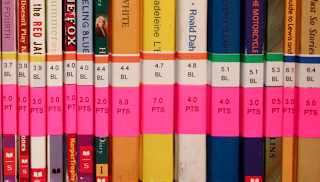
Ergo, that means if, as an author, I use bigger words and writer a longer book, my book is "worth more." And for readers, this is the perfect way to celebrate the wonder of the written word. Naturally, this is an incentive because reading is all about the points. I do know that my niece won't read "under" her AR level. (My books don't make the cut; the numbers are too low.)
So I checked on my novels, a little depressed about my low numbers and found that Freeze Frame, Compromised, and Compulsion and are worth 9, 11, and 8 points respectively. Out of curiosity, I went to see the AR levels of some of my favorite books on the planet, books I'd love for my daughters to read one day, books whose ideas transcend time.
The Pearl, John Steinbeck: 4
Going Bovine, Libba Bray: 17
The Heart of Darkness , Joseph Conrad: 10
Feed, MT Anderson: 7
The Absolutely True Diary of a Part Time Indian, Sherman Alexie: 6
Speak, Laurie Halse Anderson: 7
The Book Thief , Marcus Zusack: 18
Burned, Ellen Hopkins: not found (meaning no AR points for her)
Junie B Jones, Barbara Park: 1
American Born Chinese, Gene Luen Yang: 1
This is ... confusing. American Born Chinese has a MG rating with a BL of 3.3. Junie B Jones has a LG rating with a BL 2.7. So does this mean an advanced 3rd Grader, Junie B Jones fan, could read, comprehend, and appreciate the ideas presented in American Born Chinese since they've been given almost the same rating? And, by that token, an 8th grader could read Junie B and argue it's a valid reading choice considering ABC has the same rating?
American Born Chinese was the first graphic novel to win the Printz award (awarded by the American Library Association) and was short-listed for the National Book Award. It's holy shitballs amazing. (I'm sure I'd get nicked on my AR score for such an unsophisticated phrase), but if a kid has to read 18 AR points, she's not going to pick up American Born Chinese because it's maybe considered "light."
In the same vein, my novel, Compromised is a UG, BL 3.3, AR 11 while Joseph Conrad's masterpiece The Heart of Darkness is a UG, BL 9, AR 10 (since it's such a light read and so easy to grasp).
From what I understand, teachers who do this program with students require students to get a number of points per quarter, semester, year ... whatever. This can be done by taking the square root of the BL, dividing it by the AR multiplying it by the number of pages per each book and number of words that have more than three syllables, then adding the number of right multiple choice answers students get and do the hokey-pokey.
So I'm disgruntled. Go to the source, I think and search the masterminds behind AR. This is their mission statement:
Our primary purpose is to accelerate learning for all children and adults of all ability levels and ethnic and social backgrounds, worldwide.
Um. Why?
What's the big hurry?
Have we ever considered that kids don't focus and don't take their time and don't spend the time they need on a problem, a book, a difficult science question simply because we live in an accelerated world? What would happen if, for example, we gave kids time to reflect, to ingest new ideas and respond to them? (I think that would be called "education"). Even crazier: What would happen if we didn't assign number values to books, allowed kids to explore books at their own pace, encouraged them to read everything from picture books to graphic novels, comics to historical fiction? Is that so radical?
This Renaissance Learning Company has succeeded in finding a very tidy way of approaching literacy. Businesses have clear goals and quantifiable outcomes. Education, though, the real stuff, is MESSY. Ideas are messy. Ideas can't be shaded in with a pencil on a multiple-choice test. I'd argue that the ideas and depth in novels written by MT Anderson, Sherman Alexie, Laurie Halse Anderson (I could go on and on and on) can't be measured by numbers, can't be given a set value.
I know teachers are in a bind, trying to promote literacy, challenge students, and answer to the Great Powers That Be (Though I don't know who those great powers are, I imagine they wield a pretty heavy sword and can cut jobs like what's-his-name decapitated people in the French revolution. You know who I'm talking about. Yes, I did read Jennifer Donnelley's Revolution but was spared the AR test, hence don't remember the name of what's-his-name.) But I wonder how a number system can promote literacy.
There are other ways to create readers. In fact, I'd argue, this system truncates more than feeds. It's the perfect way to kill the simple joy of reading. It shuts more doors than opens. It creates a kind of perverse book social status rating system. And, at the end of the day, it teaches kids that numbers matter more than content. It's just another extension of how we think in our society. The numbers game pervades every part of our culture; it pushes young people into careers based on projected salary instead of projected joy; it makes sure everyone has the newest and best sound system; it makes winning at all costs the expectation, not the exception. (Ask Lance Armstrong about this attitude and how that worked out for him.)
Einstein had this hanging on his office door (and from what I understand, he was a pretty smart guy): Not everything that counts can be counted, and not everything that can be counted counts.
It's not fair. It's not fair to take novels and turn them into numbers. It's not fair to our students -- students who should be working to develop critical thinking skills, reading books because they inspire them, not reading to get the points they need. And honestly, it makes absolutely no sense. It's cheap. It's easy. And it depresses the hell out of me.
Alas, what to do?
I suppose since I can't fight the masses, I might as well join them. I'm thinking of setting up my own number system. Since we're assigning random number values to people's life's work, why not teach art the same way? We could give Jackson Pollock's Drip Period a 48, maybe 50; Picasso's Guernica is definitely a 32; the Sistine Chapel's got to be off the charts. I mean, he did paint it laying on his back, right? But Miro's probably a 1 or 2 since he drew like a kid.
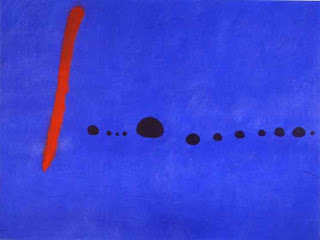
Published on February 01, 2013 06:27
January 19, 2013
We've Hit Bottom
Last year, I wrote the two most significant things that I’ve ever done were move to Colombia and have children. They are, by far, the two things that have thrown everything I “knew” to be true and put question marks all over that “knowledge.”This has been simmering in me for over a month now. I’ve been trying to comprehend the reactions I’ve read about in the news, on Facebook, around the country and world. I didn’t want to write anything for fear that what I have to say wouldn’t come out the way I wanted to say it. But the simmer has turned to a boil. I’m angry. I’m furious. So I have to write.The two things that have most impacted my life that didn’t touch me “directly” have been 9-11 and the shootings at Sandy Hook Elementary School. During 9-11, I never felt so proud of how a nation could pull together: firefighters, politicians, police officers, military … During those first months post 9-11, it felt like everyone understood what was important. We came together, put our individual needs aside, and worked together as a country.Post Sandy Hook Elementary, though, I feel shame. We’ve hit bottom. Twenty first graders lost their lives. Six of their teachers. Twenty six people, educators and CHILDREN, died brutal, horrible, senseless deaths. They weren’t on the “front lines” of some war. They were probably going to school that day to do winter crafts and learn about snow. My stomach hurts. I read every name of those children and their teachers. I read them slowly. Out loud. Their names should be shouted everywhere because somehow, somewhere, things have gone horribly wrong.In the aftermath, there’s been so much love and support to Sandy Hook Elementary and its community. That, I am proud of. However, there’s also been this:
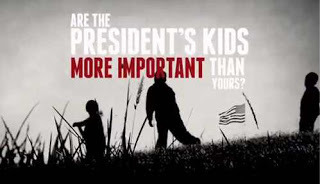 And this ...
And this ...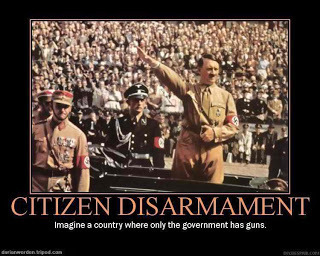
(Yeah. Likening Obama's administration to a man responsible for the deaths of 11 million people, only counting the gypsies and Jews in concentration camps and not counting the people who died during the war, disgusts me. You don't have to like the president, but Jesus, get a historical grip.)
And this ...
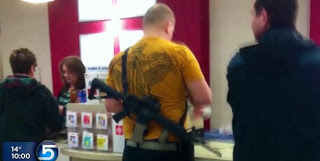
That’s the best they can do? This is how they console the families of those who died? This is their callous reaction to the senseless death of children: Don’t take my fucking guns away, dude. It’s my fucking right.Wow.Wow.Wow.You see where the whole hanging my head in shame comes in. This is a perversion of the individualism that makes America so great. There are few countries in which anything is possible. America is one of them because we honor the individual. But when the individual’s needs, cravings, and ego get in the way of the greater good for society, that’s the ugliest part of America I know.There is something called society. We live in one (most of us do, anyway). To live in a society, there has to be laws. Laws are for the greater good of people. People got tired of dying of lung cancer from second-hand smoke (food servers and bar tenders, in particular). So laws were created to protect THE PEOPLE. Now, smokers can’t smoke in restaurants, bars, malls. Second-hand smoke lung cancer plunged. People live healthier. It MAKES SENSE.Yet carrying an automatic weapon to go shopping at JC Penney is okay, even lauded, by people because some guy is making a point? How grotesque and insensitive and so horribly, horribly wrong. He’s not making a point. He’s being an asshat. He’s infringing on my rights to live in a world where my kids don’t have to grow up thinking they’re only safe with an AK-47 slung around their shoulders. He's saying to every parent of those children who died, "Yeah. But nobody's getting my gun because my individual right to carry a gun whose only purpose is to murder people is more important than your child's life."
So, here I’ve got a little quiz for those happy automatic weapon toters out there:Do you have a nuclear warhead in your shed?Do you have an F-15 jet in your garage?Do you have a missile launcher? (Not the pansy-ass stuff, but I’m talking the real deal)?Do you have a stealth bomber?Do you have an assault helicopter?Well, then, guess what? Your 2nd Amendment Rights are being violated. Historically speaking, the 2nd Amendment guaranteed that people could overthrow their government. Yep. That’s it. The Brits didn’t want Americans (then Brits) to have guns and then there was oppression and tea parties and Paul Revere’s ride “The British are coming! The British are coming!” (Somebody tell Sarah Palin, okay?) and Washington’s Christmas attack. Nifty stuff. Today, unless you’re some backwoods farmer with a silo-turned-missile gadget, your rights are being violated.So people are all worked up about the history of the last century and the Germans turning on their people and the Bosnians and a whole slew of other oppressors. WAKE THE HELL UP! Hello, Facebook. Hello, Egypt and Lybia and this wonderful, crazy thing called the information age. There’s no freaking way a government will turn on its people without the whole world tweeting about it in mili-moments. Christ, we had to hear about Snooki's book deal (which still chafes me, btw) …I live in what most people consider to be a dangerous country. Colombians, in the past sixty or seventy years, have lived through war, the rise of guerilla groups, paramilitary groups, mob violence similar to the Al Capone days, and more. They were prisoners to violence for many years.In fact, I don’t know a single Colombian whose life hasn’t been touched by the violence. Not a single one. That’s not an exaggeration. Every friend of mine has had his or her life touched by kidnappings, extortion, bombings, mob violence and more. Every. Single. Friend.My fellow Colombians are horrified at the violence in the States. Frankly, I am, too. They say to me, “Man, you guys are messed up.”Yeah. I kind of think the same.You see, if we were to read about a massacre like this that took place in Sudan or Chad or any other country, we’d shout and demand the UN intervene. We’d scream genocide – that’s what it was – and make a call for international action. But we don’t because there’s an incredibly powerful lobby group, the NRA, that pours money into congress and a swathe of the population who believe that when twenty children die, they have a right to carry an automatic gun because it’s their 2nd Amendment Right.
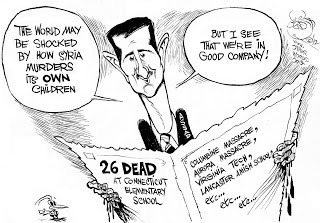 From Otherwords.org
From Otherwords.orgNobody wants to take away rifles, pistols and hunting guns -- whatever kinds of guns hunters (of animals, ducks and such, use). How can we believe that raising children in a culture of violence, teaching them they’re only safe with armed guards and bullet proof glass, is the only way? That’s not living. That’s becoming prisoners of a culture of violence. Colombians have gone through that, lived through it, and are coming out of it. I was here for part of that Colombian history when things were pretty bad. Trust me, the culture of violence is not the way to raise our kids.So let's think about what an automatic weapon does: It kills people. The shootings at Sandy Hook probably couldn't have been avoided. However, instead of mourning twenty-six people, we might be mourning six. It's time to put the Rambo ego aside and start a dialogue that makes sense. It's time to start working toward meaningful regulations on automatic weapons and stop the knee-jerk reactions.
And it's time to honor those children and educators that died. Please, take the time to put aside our personal agendas and say the names of these children and educators out loud. Scream them to the stars. December 14th, astronauts, teachers, mechanics, actors, shadow chasers, bubble blowers, jungle gym champions, nurses, fire fighters, farmers, scientists, ballet dancers, and professional athletes died.
Dawn Hochsprung (principal), 47
Mary Sherlach (school psychologist), 56
Victoria Soto (first grade teacher), 27
Charlotte Bacon, 6
Daniel Barden, 7
Rachel Davino, 29
Olivia Engel, 6
Josephine Gay, 7
Ana M. Marquez-Greene, 6
Dylan Hockley, 6
Madeline F. Hsu, 6
Catherine V Hubbard, 6
Chase Kowalski, 7
Jesse Lewis, 6
James Mattioli, 6
Grace McDonnell, 7
Anne Marie Murphy, 52
Emile Parker, 6
Jack Pinto, 6
Noah Pozner, 6
Caroline Previdi, 6
Jessica Rekos, 6
Avielle Richman, 6
Lauren Russeau, 30
Benjamin Wheeler, 6
Allison N. Wyatt, 6
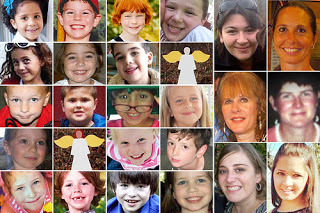
Published on January 19, 2013 09:23
December 12, 2012
A Book A Day ... December 12 and a modern-day Swan Lake
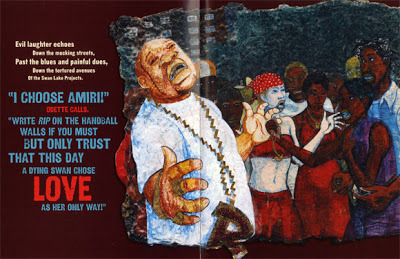
I. Love. Walter Dean Myers.
He's one of the best contemporary fiction writers on the market. His prose is poetry. He writes heartbreaking stories about life in inner cities. He writes about crime and hope. He writes about the human spirit.
Amiri and Odette is Myers' verse picture book salute to Tchaikovsky's Swan Lake. Illustrated by Javaka Steptoe, Amiri and Odette is one of the most phenomenally illustrated picture books I've seen in a long, LONG time. (The artist painted acrylics on asphalt slabs giving the story an exquisite urban feel.)
The story takes place in the Swan Lake projects. Amiri, obsessed with basketball, ignores his mother's pleas to find a good woman ... until he sees Odette. His heart is set on fire. But Odette is promised to Big Red -- a local drug dealer. Like the original Swan Lake, Amiri mistakes a girl who looks so much like Odette at his party for Odette and declares his love to her.
Myers uses verse to take this heartbreaking story of lost love to create an urban, contemporary feel. Plus, there are a few unexpected twists as well.
Exquisite! Exquisite! Exquisite! It's a perfect gift for ballet fans, urban art fans, poetry fans, Myers' fans ... A beautiful, unexpected, edgy picture book.
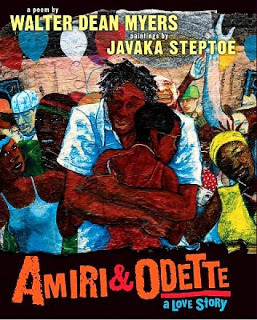
Published on December 12, 2012 09:02
December 11, 2012
December 11th and Dizzy
It was like he had taken a wrecking ball/and SMASHED IN/The House of Jazz,/till the walls came tumbling down….Today I'm shouting out for the magical picture book Dizzy, written by Jonah Winters and illustrated by Sean Qualls. It's about the life of legendary jazz trumpet player John Burks “Dizzy” Gillespie. This visually phenomenal, breathtakingly rhythmic journey into the turbulent life of this trumpet musician takes no short cuts and doesn’t gloss over the incredibly difficult life of Gillespie growing up in poverty in an abusive home. Gillespie’s life changed the day a teacher gave him a trumpet and Gillespie’s red-anger splashes over the pages as he plays into the trumpet with a blare. Follow the rhythm of the music, the colors that accompany Gillespie’s journey through childhood sadness to the vibrant city life in New York. A starred Booklist review says “Qualls is able to translate the story (and the music) into shapes and colors that undulate and stream across the pages with a beat and bounce of their own.”If you or your children don’t know much about jazz, check out Dizzy and get lost in a palette of colors and rhythms. The best thing to do after reading this book with your kids is to sit back and listen to Dizzy’s version of The Way You Look Tonight and literally be blown away. (All ages)
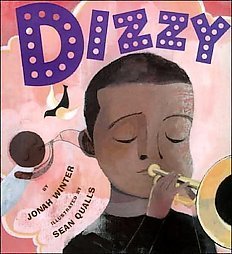
Published on December 11, 2012 05:49
December 10, 2012
December 9 and December 10 ... Colombia From the Hip

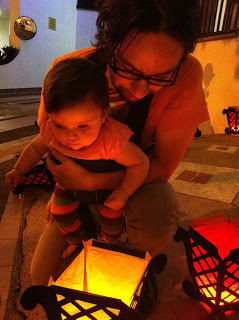

I'm going to take a short pause from a book a day to give you a glimpse into Colombia's Festival of Lights. December 7th and 8th, Colombians (and most Catholics, I imagine), celebrate The Festival of the Immaculate Conception. And it happens to be one of my favorite Colombian traditions. The streets line with colorful lanterns and glow with the soft light of candles. Then, of course, there are the fireworks and craziness that go with it.
What I love, though, is that it's a festival of sharing. Parents and children light candles together. There's a sense of awe that comes with candlelight and shimmery, rich colors.
Candles are used in ceremonies around the world. Sailor's wives and mothers used to keep candles lit in their windows until a sailor returned safe from his journey at sea. Candles are lit at churches to say a prayer, remember someone, ask for help ... the mystery of fire is like a messenger to the Gods.
I moved to Colombia in 1997. My dad also believed in the magic of light and candles. He found a candle-shaped light bulb and put it in the window to remain lit until my return home. And, because my dad NEVER did anything without thinking it through, he had a slew of backup light bulbs on hand. That light was never turned off. He'd call me and say, "The light's still on."
I'm sure I appreciated it.
But not as much as I should've.
And I'm sure I smiled and rolled my eyes and said, "Dad, you don't have to have a light on for me. I'm not out at sea or anything."
He did, though. He kept the light on for me. So after two years in Colombia, I decided to stay. I was pretty head over heels for that guy in the picture up there and thought I'd stick around to see what happened. (Two beautiful daughters and a wonderful life is what happened.)
Dad kept the light on. Waiting for me to return home.
Cesar and I lived in Europe and Asia. We backpacked all over Europe, ASia, and South America. At some time, and I'm not sure when, Dad put the light away. I think he decided that with Cesar, I'd found my home.
So this past weekend, I lit a lot of lanterns, and I made wishes and sent love up into the stars because I know Dad's found his home.
I miss him. I miss knowing there's a light in the window for me. But it's my turn to turn the light on for him, to remember him, to send messages up to him through the magic of a flame.
So, Dad, the light's still on.
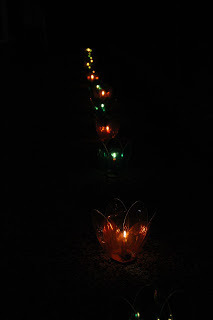
Published on December 10, 2012 06:00
December 8, 2012
A Book A Day ... December 8 and Between Shades of Gray
NOT the other book you're thinking about ... I spared myself from jabbing my eyes out by refraining from reading that book. I know. That doesn't sound very gracious, does it? But I read two pages and felt my writer's soul weep.
Enough enough enough about that. Today is December 8th, and I am shouting out for Ruta Sepetys gorgeous historical novel Between Shades of Gray.
This exquisite and harrowing novel is about the genocide that took place in Lithuania (and the other Baltic States) under Stalin's reign after the Russian invasion in 1939. Fifteen year old Lina, a gifted artist who came from a privileged home, is forced into a Siberian work camp with her mother and brother after the invasion. Between Shades of Gray chronicles their struggles to stay alive, the friendships they form, their fear and, most importantly, hope. Lina tells her story through her charcoal drawings, hoping that one day her father will be able to follow the trail of these drawings and reunite with his family.
I, for one, had no idea that this had happened. Millions were forced from their homes, sent to work camps, murdered, and raped. It's a piece of history that, for some reason, has been under-reported, under-told. I'm grateful for Sepetys, as she's found a way to tell the story of millions of people, found a way to give voice to a period of time that has been kept silent for so long. (Appropriate for ages 12 and up).
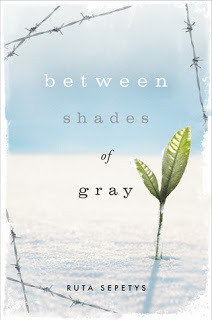

Enough enough enough about that. Today is December 8th, and I am shouting out for Ruta Sepetys gorgeous historical novel Between Shades of Gray.
This exquisite and harrowing novel is about the genocide that took place in Lithuania (and the other Baltic States) under Stalin's reign after the Russian invasion in 1939. Fifteen year old Lina, a gifted artist who came from a privileged home, is forced into a Siberian work camp with her mother and brother after the invasion. Between Shades of Gray chronicles their struggles to stay alive, the friendships they form, their fear and, most importantly, hope. Lina tells her story through her charcoal drawings, hoping that one day her father will be able to follow the trail of these drawings and reunite with his family.
I, for one, had no idea that this had happened. Millions were forced from their homes, sent to work camps, murdered, and raped. It's a piece of history that, for some reason, has been under-reported, under-told. I'm grateful for Sepetys, as she's found a way to tell the story of millions of people, found a way to give voice to a period of time that has been kept silent for so long. (Appropriate for ages 12 and up).

Published on December 08, 2012 06:18
December 7, 2012
A Book A Day ... December 7 and The Broken Lands
"A crossroads can be a place of great power."
Again, Kate Milford takes time and history and mystery and gadgets and really, really wows us with the classic evil versus good dilemma. Her bad guys ooze evil in the most chilling way. Her good guys include, Sam, a card shark and Jin, a female Japanese pyro expert capable of exploding the night sky and all of New York City along with it.(Which I thought appropriate to recommend the day we celebrate the Festival of Lights here in Pereira.)
The Broken Lands is a wonderful tale, the prequel to Milford's 2010 debut The Boneshaker, with some of the same characters (like Tom) that we've grown to love. And there's nothing better than trying to beat the devil at his own game with a deck of cards and wits and courage.
I love historical fiction. Kate simply takes it to a whole new level. The details of the past paint a rich picture of New York City and Coney Island in the nineteenth century. Impeccably researched -- my dad would've loved the part about the Brooklyn Bridge and "caisson disease".
I was transported to another time and so so glad that Jin and Sam were there to fight the powers of evil! The Broken Lands is wonderful vignette of history where the battle to save mankind takes place. Can't ask for much more than that.
It's a high level read. Perfect for middle graders on up.
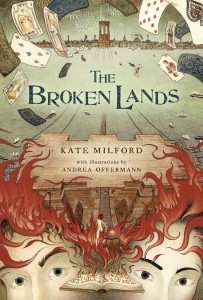

Again, Kate Milford takes time and history and mystery and gadgets and really, really wows us with the classic evil versus good dilemma. Her bad guys ooze evil in the most chilling way. Her good guys include, Sam, a card shark and Jin, a female Japanese pyro expert capable of exploding the night sky and all of New York City along with it.(Which I thought appropriate to recommend the day we celebrate the Festival of Lights here in Pereira.)
The Broken Lands is a wonderful tale, the prequel to Milford's 2010 debut The Boneshaker, with some of the same characters (like Tom) that we've grown to love. And there's nothing better than trying to beat the devil at his own game with a deck of cards and wits and courage.
I love historical fiction. Kate simply takes it to a whole new level. The details of the past paint a rich picture of New York City and Coney Island in the nineteenth century. Impeccably researched -- my dad would've loved the part about the Brooklyn Bridge and "caisson disease".
I was transported to another time and so so glad that Jin and Sam were there to fight the powers of evil! The Broken Lands is wonderful vignette of history where the battle to save mankind takes place. Can't ask for much more than that.
It's a high level read. Perfect for middle graders on up.

Published on December 07, 2012 06:00
December 6, 2012
A Book A Day ... December 6 and The Unbecoming of Mara Dyer
The Unbecoming of Mara Dyer by Michelle Hodkin
Blurb:
Mara Dyer believes life can’t get any stranger than waking up in a hospital with no memory of how she got there.
It can.
She believes there must be more to the accident she can’t remember that killed her friends and left her strangely unharmed.
There is.
She doesn’t believe that after everything she’s been through, she can fall in love.
She’s wrong.
I first wanted to read this book because I loved the title. I was so so not expecting what happened and who Mara was, which is nice. (This is why I often don't read reviews because there are too many spoilers.) What I love is that it is fast paced, unexpected, and Mara is a very likeable, very flawed main character. And the whole weirdness about the book ... works. After reading the "story behind the story", it makes the book even creepier and more thrilling.
I don't even want to tell you the "genre" of the book because it might give some of what's going on with Mara away. It's a great read for those who like suspense, contemporary, paranormal, a little thriller, too. Honestly, it touches on all sorts of unexpectedness, and the more I think about it and the story behind the story (which I just read for curiosity), the more fascinating the book becomes.
Not for young ones. Definitely YA -- maybe 13 and up. Be ready, though, to get lost or lose someone within the first few minutes of picking up the book because you really won't want to put it down until you get to the end.
(Don't read at night!)


Blurb:
Mara Dyer believes life can’t get any stranger than waking up in a hospital with no memory of how she got there.
It can.
She believes there must be more to the accident she can’t remember that killed her friends and left her strangely unharmed.
There is.
She doesn’t believe that after everything she’s been through, she can fall in love.
She’s wrong.
I first wanted to read this book because I loved the title. I was so so not expecting what happened and who Mara was, which is nice. (This is why I often don't read reviews because there are too many spoilers.) What I love is that it is fast paced, unexpected, and Mara is a very likeable, very flawed main character. And the whole weirdness about the book ... works. After reading the "story behind the story", it makes the book even creepier and more thrilling.
I don't even want to tell you the "genre" of the book because it might give some of what's going on with Mara away. It's a great read for those who like suspense, contemporary, paranormal, a little thriller, too. Honestly, it touches on all sorts of unexpectedness, and the more I think about it and the story behind the story (which I just read for curiosity), the more fascinating the book becomes.
Not for young ones. Definitely YA -- maybe 13 and up. Be ready, though, to get lost or lose someone within the first few minutes of picking up the book because you really won't want to put it down until you get to the end.
(Don't read at night!)

Published on December 06, 2012 06:00
December 5, 2012
A Book A Day ... December 5th and Breadcrumbs
"It snowed right before Jack stopped talking to Hazel, fluffy white flakes big enough to show their crystal architecture, like perfect geometric poems."
Breadcrumbs by Anna Ursu was one of my favorite novels this year. The lyrical prose, creepy, ultra-creepy world Ursu creates inspired by Hans Christian Anderson's, The Ice Queen, brings us Hazel and Jack -- our modern-day Hansel and Gretel.
Hazel is a misfit learning to deal with a new school, her parents' divorce, her father's new family and economic problems. Jack, her next door neighbor, has been her best friend since she can remember. His family struggles as well since his mother is battling (and seemingly losing) clinical depression. Hazel and Jack are perfect together. Until the day Jack stops talking to Hazel.
Hazel, believing in magical worlds and other forces suspects something is wrong with Jack. When he goes missing, she doesn't believe he's been sent to live with an Aunt in Florida.
This is much more than an adventure of Hazel finding Jack -- brilliantly woven with threads and story lines from the dark side of the fairy tale world. It's a story about acceptance, love, loss, "the struggle to hold on, and the things we leave behind."
Warning: It's a sad story. Hazel is a phenomenal anti-hero that will most likely break your heart.
(Ages: 9+) I, however, shared much of the story with my four-year-old, skipping the creepy parts ... because the creepy parts are insanely creepy.


Breadcrumbs by Anna Ursu was one of my favorite novels this year. The lyrical prose, creepy, ultra-creepy world Ursu creates inspired by Hans Christian Anderson's, The Ice Queen, brings us Hazel and Jack -- our modern-day Hansel and Gretel.
Hazel is a misfit learning to deal with a new school, her parents' divorce, her father's new family and economic problems. Jack, her next door neighbor, has been her best friend since she can remember. His family struggles as well since his mother is battling (and seemingly losing) clinical depression. Hazel and Jack are perfect together. Until the day Jack stops talking to Hazel.
Hazel, believing in magical worlds and other forces suspects something is wrong with Jack. When he goes missing, she doesn't believe he's been sent to live with an Aunt in Florida.
This is much more than an adventure of Hazel finding Jack -- brilliantly woven with threads and story lines from the dark side of the fairy tale world. It's a story about acceptance, love, loss, "the struggle to hold on, and the things we leave behind."
Warning: It's a sad story. Hazel is a phenomenal anti-hero that will most likely break your heart.
(Ages: 9+) I, however, shared much of the story with my four-year-old, skipping the creepy parts ... because the creepy parts are insanely creepy.

Published on December 05, 2012 05:33
December 4, 2012
A Book A Day ... December 4th and the Era of the Dystopian
Today, I'm going for an entire genre. We could pretty much sum up the past couple years as: THE AGE OF THE DYSTOPIAN.
In the writing world, there are tendencies. (It's kind of what happens when we name our kids thinking we'll have the only XXXX on the planet only to find out there are seven with the same name in her Kindergarten class). For a while, we were immersed in magic. Then we got fangs and fur. Then there wasn't a best seller without a person talking to the dead, seeing the dead, or paranormal activity.
Now, it's the age of dystopian. There are loads of fun reads including, not exclusive to, Suzanne Collins' The Hunger Games trilogy, Veronica Roth's Divergent trilogy, Ally Condie's Matched trilogy, and Veronica Rossi's Under The Never Sky trilogy, Scott Westerfeld's The Uglies trilogy, Lauren Oliver's Delirium trilogy. Fast-paced, action-packed ... great reads by great writers.
The original dystopian novels of note were George Orwell's 1984 (1934)and Ray Bradbury's Farenheit 451 (1953). There are some common denominators in dystopian novels that pretty much tap into our fears about how we're treating the world and how invasive our governments have become:
1. We screw up. Royally.
2. Our environment has gone to the shitter.
3. There's this all-seeing kind of government-type system that makes sure we don't screw up again. (Big Brother in one form or another)
4. There are pockets of discontent -- rebellions going on somewhere in this "new perfect" society that reveal to our main characters the imperfections of perfection.
5. There's an unlikely love story (which, in and of itself, becomes likely since we know it's part of the dystopian framework).
6. They, for some reason, make them into trilogies. (This is weird and I don't know if it's a dystopian thing or just the modern-day dystopian thing.)
Things to learn from dystopian novels:
1. START RECYCLING NOW ... (A lesson to be learned from the future worlds we're presented with. Bleak, bleak, bleak, I tell you!)
2. Recycle. For real. Now.
3. If somebody says they want to put a chip in your brain to make your life easier, just say, "No." Then run away and start a rebellion community.
4. Bury your books in a black-box type contraption to save from the evil government-to-be.
5. Learn how to hunt with a bow and arrow. (This proves incredibly useful.)
There are so many to choose from, but I have to say, I've got to go with two of my favorite authors and their dystopian visions of the world. Both novels are stand-alone. (I'm a fan of stand-alone novels, so this is perhaps one of the reasons I'm a fan of these.) Who am I kidding? They're just brilliant.
December 4th I tip my hat to the jaw-opening marvels, word magicians, and world creators: MT Anderson and Cormac McCarthy.
Feed is everything you want in a novel. Everything. I think, in all honestly, it's pretty perfect. The characters are real. They screw up. And things just don't get fixed. It's a scathing criticism of modern-day society and commercialism and the superficiality we all slip into. And, it's eerie because it's pre-Pandora and stations that profile your music choices etc.

The Road is the most beautiful love story I've read in eons. It's about a father who is doing everything to make sure his son survives. And he makes sure that if his son is going to die, he will with dignity and on his own terms. It's sparse and harsh and has a still beauty that ... wow. Just wow.

I don't doubt that most of you have already read these two novels, so that's why I've listed the other ones above. LOADS of novels to choose from. LOADS AND OODLES AND MORE. (I'm sure I've missed some great ones, too.)
In the writing world, there are tendencies. (It's kind of what happens when we name our kids thinking we'll have the only XXXX on the planet only to find out there are seven with the same name in her Kindergarten class). For a while, we were immersed in magic. Then we got fangs and fur. Then there wasn't a best seller without a person talking to the dead, seeing the dead, or paranormal activity.
Now, it's the age of dystopian. There are loads of fun reads including, not exclusive to, Suzanne Collins' The Hunger Games trilogy, Veronica Roth's Divergent trilogy, Ally Condie's Matched trilogy, and Veronica Rossi's Under The Never Sky trilogy, Scott Westerfeld's The Uglies trilogy, Lauren Oliver's Delirium trilogy. Fast-paced, action-packed ... great reads by great writers.
The original dystopian novels of note were George Orwell's 1984 (1934)and Ray Bradbury's Farenheit 451 (1953). There are some common denominators in dystopian novels that pretty much tap into our fears about how we're treating the world and how invasive our governments have become:
1. We screw up. Royally.
2. Our environment has gone to the shitter.
3. There's this all-seeing kind of government-type system that makes sure we don't screw up again. (Big Brother in one form or another)
4. There are pockets of discontent -- rebellions going on somewhere in this "new perfect" society that reveal to our main characters the imperfections of perfection.
5. There's an unlikely love story (which, in and of itself, becomes likely since we know it's part of the dystopian framework).
6. They, for some reason, make them into trilogies. (This is weird and I don't know if it's a dystopian thing or just the modern-day dystopian thing.)
Things to learn from dystopian novels:
1. START RECYCLING NOW ... (A lesson to be learned from the future worlds we're presented with. Bleak, bleak, bleak, I tell you!)
2. Recycle. For real. Now.
3. If somebody says they want to put a chip in your brain to make your life easier, just say, "No." Then run away and start a rebellion community.
4. Bury your books in a black-box type contraption to save from the evil government-to-be.
5. Learn how to hunt with a bow and arrow. (This proves incredibly useful.)
There are so many to choose from, but I have to say, I've got to go with two of my favorite authors and their dystopian visions of the world. Both novels are stand-alone. (I'm a fan of stand-alone novels, so this is perhaps one of the reasons I'm a fan of these.) Who am I kidding? They're just brilliant.
December 4th I tip my hat to the jaw-opening marvels, word magicians, and world creators: MT Anderson and Cormac McCarthy.
Feed is everything you want in a novel. Everything. I think, in all honestly, it's pretty perfect. The characters are real. They screw up. And things just don't get fixed. It's a scathing criticism of modern-day society and commercialism and the superficiality we all slip into. And, it's eerie because it's pre-Pandora and stations that profile your music choices etc.

The Road is the most beautiful love story I've read in eons. It's about a father who is doing everything to make sure his son survives. And he makes sure that if his son is going to die, he will with dignity and on his own terms. It's sparse and harsh and has a still beauty that ... wow. Just wow.

I don't doubt that most of you have already read these two novels, so that's why I've listed the other ones above. LOADS of novels to choose from. LOADS AND OODLES AND MORE. (I'm sure I've missed some great ones, too.)
Published on December 04, 2012 06:00



